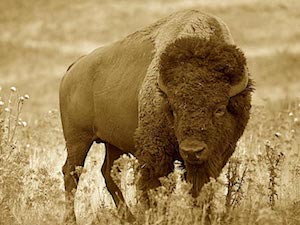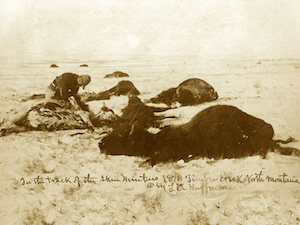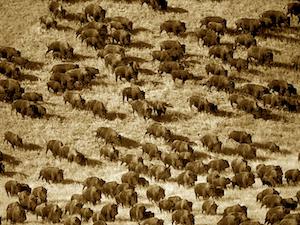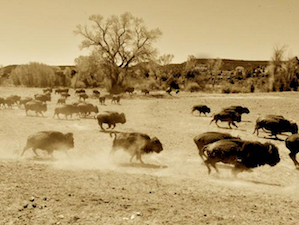





Tatanka (Buffalo)
A way of life for many...
© Richard Coffey - All Rights Reserved
 Tatanka (Buffalo)
Tatanka (Buffalo)
There was a time when millions of buffalo roamed the vast empty spaces of the prairies. Back then the American grasslands stretched east to west from southern Wisconsin to western Montana and south to north from central Texas to Canada. Before 1850, between twenty and sixty million buffalo roamed the North American plains. Hunting buffalo was the way of life for Plains Indians.
George Catlin, artist and observer on the upper Missouri during the 1830s, once reported seeing several thousand buffalo raising huge clouds of dust:
"They pawed the earth in mass, eddying and wheeling about... plunging and butting at each other while all roaring deep and hollow sounds; which mingled together like the sound of distant thunder at the distance of a mile or two.”
The buffalo was the most important animal for many American Indian nations. For thousands of years, Native Americans of the prairie grasslands relied heavily on buffalo for their survival and well-being, using every part of the bison for food, clothing, shelter, tools, jewelry and in ceremonies. The decimation of millions of bison in the 1800s was pivotal in the tragic devastation of Indian people and society.
 About the Music:
About the Music:
A great sounding string patch on the Casio birthed this tune. It is arranged more as a classical legit composition as it consists primarily of strings and orchestral percussion (timpani, wood blocks, etc.). The short section where the Native America Bass Flute solos has frame drums added.
The consistent dissonance in the strings signifies the risk, excitement and tension Native Americans faced when hunting buffalo herds and the mellow contrast of the flute solo section represents the sacred moment after the kill when thanks are given to Great Creator for the sustenace provided by the buffalo.
- Casio PX-S3000 - strings, timpani, wood blocks, congas, cymbals
- Roland D-50 - pad behind flute solo